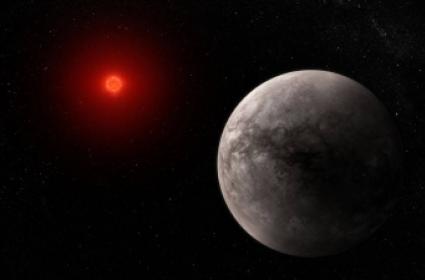Webb finds no 'significant atmosphere' on rocky exoplanet

Washington, March 28 (IANS) The next-generation James Webb Space Telescope has found no significant atmosphere on the rocky exoplanet TRAPPIST-1 b, mission officials said on Tuesday.
An international team of researchers used Webb's Mid-Infrared Instrument (MIRI) to measure the temperature of the TRAPPIST-1 b, based on the exoplanet's thermal emission -- heat energy given off in the form of infrared light.
The result indicates that the planet's dayside has a temperature of about 500 kelvins (roughly 450 degrees Fahrenheit) and suggests that it has no significant atmosphere.
This is Webb's first detection of any form of light emitted by an exoplanet as small and as cool as the rocky planets in our own solar system, mission officials said.
The findings, published in the journal Nature, marks an important step in determining whether planets orbiting small active stars like TRAPPIST-1 can sustain atmospheres needed to support life.
It also bodes well for Webb's ability to characterise temperate, Earth-sized exoplanets using MIRI.
"These observations really take advantage of Webb's mid-infrared capability," said lead author Thomas Greene, an astrophysicist at NASA's Ames Research Center, in a statement.
"No previous telescopes have had the sensitivity to measure such dim mid-infrared light."
Discovered in early 2017, TRAPPIST-1 is an ultra-cool red dwarf star in the constellation Aquarius with a planetary system of seven known planets.
What is remarkable about the planets is their similarity in size and mass to the inner, rocky planets of our own solar system.
Although they all orbit much closer to their star than any of our planets orbit the Sun --Aall could fit comfortably within the orbit of Mercury A--Athey receive comparable amounts of energy from their tiny star.
TRAPPIST-1 b, the innermost planet, has an orbital distance about one hundredth that of Earth's and receives about four times the amount of energy that Earth gets from the Sun.
Although it is not within the system's habitable zone, observations of the planet can provide important information about its sibling planets, as well as those of other M-dwarf systems.
Previous observations of TRAPPIST-1 b with the Hubble and Spitzer space telescopes found no evidence for a puffy atmosphere, but were not able to rule out a dense one.
The Webb team used a technique called secondary eclipse photometry, in which MIRI measured the change in brightness from the system as the planet moved behind the star.
Although TRAPPIST-1 b is not hot enough to give off its own visible light, it does have an infrared glow.
By subtracting the brightness of the star on its own (during the secondary eclipse) from the brightness of the star and planet combined, they were able to successfully calculate how much infrared light is being given off by the planet.
Disclaimer: This story has not been edited by the Sakshi Post team and is auto-generated from syndicated feed.



















